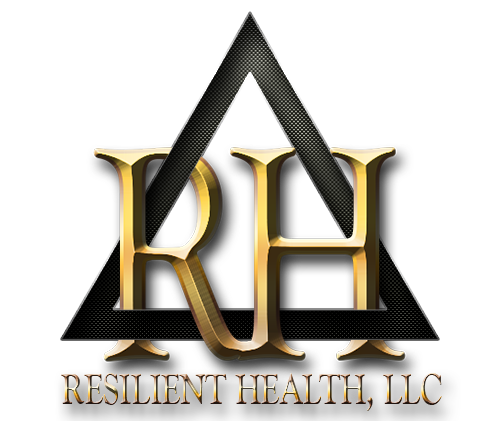⚡ The Truth About Pre-Workout: Energy Boost or Adrenal Bomb?
For many gym-goers, pre-workout is a sacred ritual—mixing a neon scoop of powder into water and chugging it before a session. The promise? Instant energy, laser focus, and beast-mode intensity.
But what’s actually in that scoop—and is it really safe to rely on it daily?
Let’s break down the science behind pre-workout supplements, how they work, the potential side effects, and when natural energy strategies may be a better choice.
🔬 What Is Pre-Workout, Really?
Pre-workout supplements are typically blends of stimulants, amino acids, vasodilators, and sometimes nootropics, marketed to increase energy, performance, blood flow, and mental focus before exercise.
Common Ingredients Include:
Caffeine (100–400 mg): The main driver behind the energy surge.
Beta-Alanine: Helps buffer acid buildup in muscles, reducing fatigue—and causes the classic tingling sensation.
Creatine: Supports ATP regeneration for explosive power.
L-Citrulline or Arginine: Boost nitric oxide production → better pumps.
BCAAs: Claimed to prevent muscle breakdown (though effects are debatable).
Taurine & Tyrosine: Amino acids often used for focus and mood support.
Artificial sweeteners, dyes, and proprietary blends: Often included, but not always disclosed in clear amounts.
⚡ The Initial Energy Boost (And Why It Feels So Good)
The jolt of energy you feel 15–30 minutes after taking pre-workout mostly comes from caffeine, which blocks adenosine (a neurotransmitter that signals tiredness) and increases dopamine and norepinephrine—giving you that focused, amped-up feeling.
Short-Term Benefits:
Improved reaction time and alertness
Increased pain threshold and endurance
Elevated heart rate and blood flow for a better “pump”
According to studies, caffeine can improve exercise performance by 2–16%, depending on dosage, workout type, and your tolerance level (Spriet, 2014; Goldstein et al., 2010).
But it’s not just the caffeine.
🔥 What’s That Tingly Feeling?
That signature “tingle” or skin-crawling sensation you feel after taking some pre-workouts?
That’s from beta-alanine, an amino acid that helps buffer acid buildup in your muscles during high-intensity training.
The tingling is called paresthesia—and while harmless, it’s intentionally included to make users “feel it working.”
While beta-alanine can support performance in 60–240 second efforts (like lifting or sprinting), its benefits are cumulative—you need to take it consistently for weeks to see real effects.
🧂 Baking Soda: A Simple, Effective Alternative
Surprisingly, baking soda (sodium bicarbonate) is a proven buffering agent too. It can help reduce muscle acidity and delay fatigue—especially in short, intense efforts.
Effective dose: ~0.3g/kg of body weight (e.g., 20–25g for a 150 lb person), taken 60–90 min before training
Some may experience GI discomfort, so testing tolerance is key
While less flashy than a neon scoop, baking soda is supported by decades of sports science research and can be a cost-effective alternative for certain athletes.
🚨 The Crash, Jitters, and Adrenal Impact
While that initial surge feels like superpowers, there are real downsides—especially if you rely on pre-workout too often or take it late in the day.
Side Effects:
Caffeine Crash: After the stimulation wears off (often within 2–3 hours), many people feel drained, irritable, or foggy.
Sleep Disruption: Caffeine has a half-life of ~5–6 hours, meaning if you take it at 4 PM, half is still in your system at 10 PM.
Jitters and Anxiety: High doses can overstimulate the central nervous system.
Adrenal Fatigue Myth: While “adrenal fatigue” isn’t medically recognized, chronic stimulant use can dysregulate your energy systems, increasing stress hormone output (cortisol) and reducing baseline energy over time.
📚 Fun Fact: Some formulas contain up to 400+ mg of caffeine—equal to 4 cups of coffee in one shot.
🧠 Tolerance and Dependency
The body adapts. Over time, you may need more pre-workout to feel the same effects, building a tolerance that reduces sensitivity to caffeine and its benefits.
And when you don’t take it? You might feel flat, sluggish, or unmotivated—not because your body "needs" it, but because it’s used to being overstimulated.
🌱 Natural Alternatives That Actually Work
If you find yourself dependent on pre-workout or want a cleaner boost, there are sustainable energy strategies backed by science.
Natural Ways to Boost Workout Energy:
Hydrate: Even mild dehydration can reduce performance by 10–20%.
Eat Smart 60–90 Min Before: Balanced carbs + protein (e.g., banana + peanut butter or oatmeal + protein shake).
Sleep 7–9 Hours: No supplement will ever outperform quality sleep.
Breathe & Warm-Up: Breathwork and a dynamic warm-up can naturally raise heart rate, blood flow, and focus.
Adaptogens (e.g., Rhodiola, Ashwagandha): Can support long-term energy, stress management, and focus without stimulants.
Green Tea or Matcha: Contains moderate caffeine + L-theanine for smoother energy with fewer crashes.
✅ When Pre-Workout Might Be Worth It
To be clear—not all pre-workouts are bad. If used occasionally, they can be a tool:
For early-morning sessions when you're dragging
During a demanding training block
If you’ve had poor sleep and need to push through
Just don’t let it become the crutch. Real energy comes from recovery, nutrition, and lifestyle—not a scoop.
🧠 Bottom Line
Pre-workout is not evil—but it’s not essential either. Like any tool, its effectiveness depends on how you use it.
If you find yourself chasing the buzz or crashing after every lift, it may be time to take a break, reset your caffeine tolerance, and focus on foundational energy habits.
Because the most powerful pre-workout?
Consistent sleep, real food, and training that excites you.

